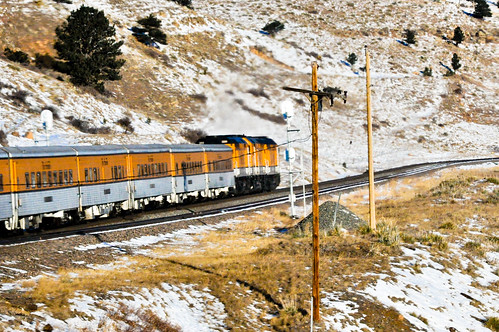In the meanwhile, people will need to get from the Metro stations to their destinations that may not be within walking distance or may be difficult to walk to. Hence the proposal to run circulator buses as described in the article. The article also points out that there is no money for the buses.
Without some sort of supplemental transportation, a significant part of the value of building the Silver Line will be lost. Currently there are thousands of reverse commuters from
 DC, Arlington and Alexandria who work in Tysons. Unless their work places are right near the new stations, many of them will continue to drive. After all, there's no HOV requirement in the reverse direction, most parking is free, and it will be so much more convenient to go right to your work place.
DC, Arlington and Alexandria who work in Tysons. Unless their work places are right near the new stations, many of them will continue to drive. After all, there's no HOV requirement in the reverse direction, most parking is free, and it will be so much more convenient to go right to your work place.Even the buses themselves will be significantly suboptimal. They will need to deal with the same traffic as the cars. Passengers will have to wait for them at both ends. If your stop is later on the route, you'll have to sit through a half-dozen earlier stops. For a lot of situations, it might take fifteen minutes to get from the Metro station to a building only a mile away. That's as long as it would take to drive all the way from the Potomac River to the building. Some sort of supplemental transportation is needed, but circulator buses--unless they can somehow be separated and given priority--will be barely adequate.
The Tysons Land-Use task force recommends that eventually that be the case:
"The vision of a transformed Tysons calls for transit services linking the four future Metrorail stations with the rest of the Urban Center. As described above, these services may begin as shuttle buses serving Metro stations and evolve over time. A second phase may be buses operating in mixed traffic. A third phase may be buses operating on exclusive rights-of-way, followed by a fixed guideway system operating on exclusive rights-of-way." (from Transforming Tysons, Fairfax County's Department of Planning and Zoning, Feb. 2009)
 What if Tysons were to leap forward to that vision now--become a visionary leader and try a radical departure from the inside-the-box transportation thinking? I believe a PRT system in concert with the Silver Line could be a catalyst for much more rapid and significant transformation of Tysons. It solves the last-mile problem elegantly. One could travel between any two points, non-stop, within Tysons in less than ten minutes. In and of itself it would attract people and businesses to Tysons. It's possible it could even pay for itself through revenues and through support from businesses (think hotels) that would support having it serve their building directly. I don't know how much support for the circulator buses might come from the businesses, which the Tysons task force has suggested. I suspect not much. It also eliminates the costs of phasing buses in and then out. It starts with the fixed guideway system from the beginning.
What if Tysons were to leap forward to that vision now--become a visionary leader and try a radical departure from the inside-the-box transportation thinking? I believe a PRT system in concert with the Silver Line could be a catalyst for much more rapid and significant transformation of Tysons. It solves the last-mile problem elegantly. One could travel between any two points, non-stop, within Tysons in less than ten minutes. In and of itself it would attract people and businesses to Tysons. It's possible it could even pay for itself through revenues and through support from businesses (think hotels) that would support having it serve their building directly. I don't know how much support for the circulator buses might come from the businesses, which the Tysons task force has suggested. I suspect not much. It also eliminates the costs of phasing buses in and then out. It starts with the fixed guideway system from the beginning.As Lincoln said "As our case is new, so we must think anew and act anew." Buses are not new. Even streetcars are not new. Why not think anew and act anew? Many people are thinking hard about how to make Tysons new. Why not take grasp of a new vision of how to make Tysons an extraordinary place--not just the old Tysons, only better? I think creating a comprehensive PRT system in Tysons will create an example that could be imitated in scores of other places in the region and the nation, creating a true transformation of our urban spaces and our transportation paradigms.












































